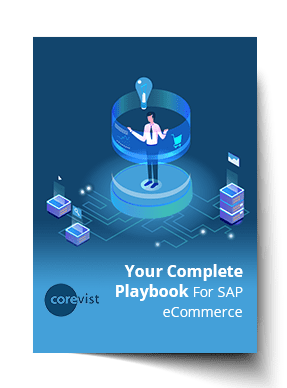Share
Author
George Anderson
Share
As the SAP market increasingly migrates from ECC to S/4HANA, many organizations are evaluating their options for integrating SAP hybris (now called Commerce Cloud) to S/4HANA. For companies that haven’t implemented either solution yet, the possibilities are wide open. If you’re already wedded to either solution, then you need to get strategic and balance the complexity of your architecture against the availability of specialized resources.
The question gets more complicated for companies that are still using older, on-premises versions of hybris (as opposed to Commerce Cloud, which is hosted in the cloud only). With many versions of hybris becoming end-of-life in 2020 and 2021, these organizations need to define a path forward for their eCommerce channels.
So what does it take to integrate S/4HANA and hybris/Commerce Cloud? Is this architecture a good fit for your organization?
In this post, we’ll explain your options. We’ll also look at good-fit use cases and alternatives for scenarios in which you can’t justify the cost and complexity of this architecture.
The basics of S/4HANA integration with hybris (SAP Commerce Cloud)
First off, we need to define a few terms. S/4HANA is easily confused with SAP HANA — but they’re not the same.
HANA is SAP’s new in-memory, relational database management system.
S/4HANA is the latest incarnation of SAP’s business suite ERP software, and it runs on the HANA database.
To make matters more complicated, SAP’s original hybris platform was on-premises only. SAP has evolved the original hybris application and now offers it only on Microsoft Azure public cloud. As we mentioned above, older on-premises versions of hybris are reaching the end of support in 2020 and 2021.
In this post, we’re talking about integrating SAP Commerce Cloud with S/4HANA ERP.
Your best option for integrating these systems is to use SCPI (SAP Cloud Platform Integration). The out-of-the-box package for S/4HANA and Commerce Cloud offers a combination of real-time and batch services for different functions.
However, it’s worth noting that integration on SCPI is not direct. SCPI is a third system that sits between HANA and Commerce Cloud. This means that in both batch and real-time scenarios, data must be replicated across all three systems. In B2C scenarios, replication and synchronization typically doesn’t cause problems since transactions are generic. However, in B2B, the complexity of customer-specific business rules can make this architecture unwieldy.
NEW Guide:
Your Complete Playbook for SAP eCommerce
Here are 4 keys to a successful eCommerce channel in an SAP ERP scenario.
Resources required to integrate Commerce Cloud with S/4HANA
While SCPI does offer out-of-the-box integration points, most organizations will need some degree of customization to fit their business processes — especially in a B2B scenario. This means you’ll need to engage a consultancy and a systems integrator to scope and build the solution for you. Alternatively, if you have SAP experts in your IT department with plenty of bandwidth, you can build the integration in-house (although that’s not a fit for every organization — see below).
Because this is a complex architecture with duplicate data and business logic, and because customization is usually required, your staffing requirements won’t end at GoLive. You’ll need a vendor to own and support your custom integration indefinitely. Alternatively, if you have the SAP resources on staff, you can support this complex integration in-house. Whichever route you choose, your integration experts will need to work hand-in-glove with your S/4HANA team and your Commerce Cloud team.
What types of companies should integrate Commerce Cloud and S/4HANA?
Integrating SAP Commerce Cloud and S/HANA makes sense for organizations that have the resources to support this complex architecture. However, in some scenarios, this integration may be difficult to justify.
As a general rule of thumb, here are the types of organizations that succeed with this architecture.
- B2C retailers that only need basic, batch-synchronized integration.
- B2B organizations that prioritize a unique, B2C-style user experience over comprehensive ERP integration and customer-personalized business rules. (Hint: Check out our blog on headless commerce for B2B to determine if a unique user experience is a competitive differentiator for your organization.)
There’s a specific scenario in which this integration may be too expensive and complex to justify.
B2B manufacturers who don’t need to differentiate with a unique user experience, but rather require deep ERP integration for customer-specific business rules. For organizations like this that don’t have lots of IT staff (or outsourcing budget) to dedicate to the integration, running Commerce Cloud integrated to S/4HANA may be too difficult to maintain.
In these scenarios, Corevist offers an SAP-approved alternative to Commerce Cloud that integrates with S/4HANA out of the box. (See below — Alternatives.)
What if you’re migrating from ECC to S/4HANA and don’t have Commerce Cloud implemented yet?
If you’re a manufacturer with customer-specific business rules, you don’t differentiate based on a unique eCommerce user experience, and you have limited IT resources, you should think carefully about implementing Commerce Cloud and integrating it to S/4HANA. As we outlined above, that architecture may be too difficult to maintain.
It’s worth noting that Corevist easily follows you from ECC to S/4HANA. Due to how we’ve architected our built-in SAP integration, the transition from ECC to S/4HANA doesn’t require much heavy lifting. With both integrations certified by SAP, you’re in good hands as you start your next chapter on S/4HANA. Read more here: Should We Wait For Our S/4HANA Migration To Launch Corevist Commerce?
Alternatives to integrating Commerce Cloud and S/4HANA
For manufacturers who may struggle to support an S/4HANA integration with Commerce Cloud, Corevist offers an SAP-approved alternative. Corevist Commerce includes comprehensive, prebuilt integration to SAP ERP for S/4HANA, ECC, R/3 and All-in-One. Our integration works in real time and doesn’t add a third system between the ERP and the eCommerce platform. And because our solutions are fully managed, you don’t have to sweat about supporting your architecture. We’ve got you covered.
NEW Guide:
Your Complete Playbook for SAP eCommerce
Here are 4 keys to a successful eCommerce channel in an SAP ERP scenario.










